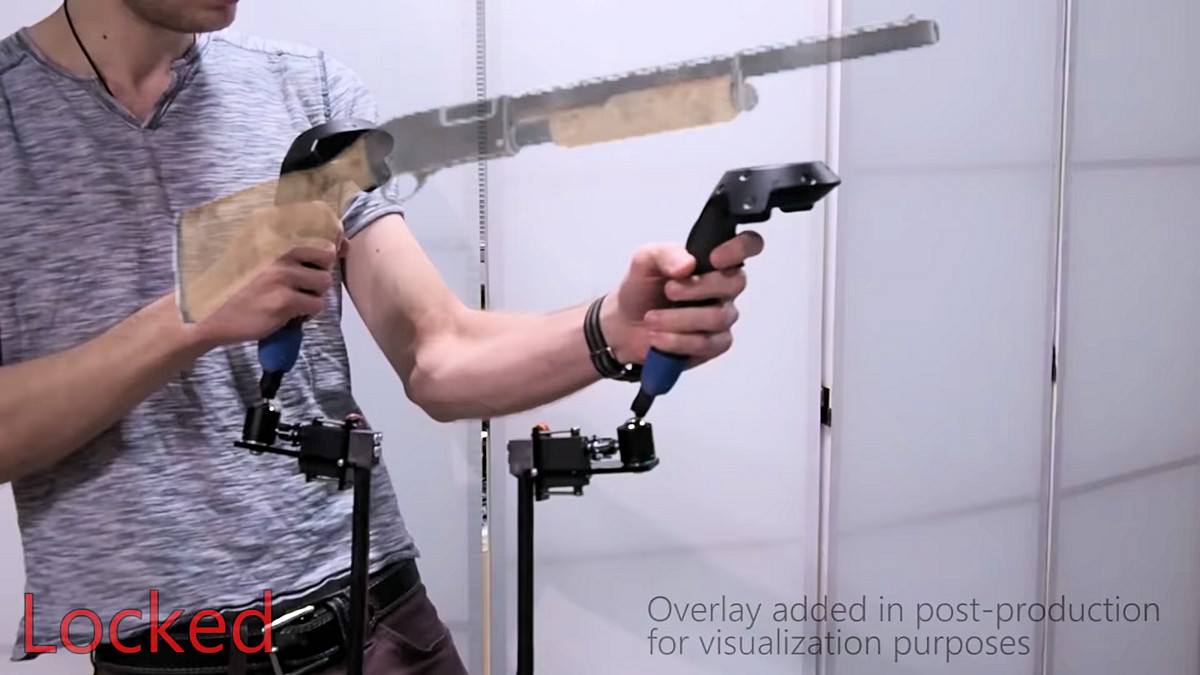Microsoft Research create Haptic Link to make VR controllers feel more real (video)
2 min. read
Published on
Read our disclosure page to find out how can you help MSPoweruser sustain the editorial team Read more

While the quality of the visual effects in virtual reality continues to improve with the power of PCs and GPUs used to render it, the same can not be said for most of the other senses we use to perceive reality, including the sense of touch.
In particular, VR games and applications often require users to manipulate virtual objects using controllers without any sense of the object really being there except for being visible.
To bring the important sense of touch and force feedback into VR, Microsoft Research created Haptic Links, which is electro-mechanically actuated physical connections capable of rendering variable stiffness between two commodity handheld virtual reality (VR) controllers.
When attached, Haptic Links can dynamically alter the forces perceived between the user’s hands to support the haptic rendering of a variety of two-handed objects and interactions. They can rigidly lock controllers in an arbitrary configuration, constrain specific degrees of freedom or directions of motion, and dynamically set stiffness along a continuous range.
Microsoft Research created three prototype Haptic Links: Chain, Layer-Hinge, and RatchetHinge. See them demonstrated in Microsoft’s video below.
While it is unlikely that most such accessories will become available to the public, some, such as chain, appear simple enough that they might hit the market someday.
The full paper can be read here.
Via WalkingCat









User forum
0 messages